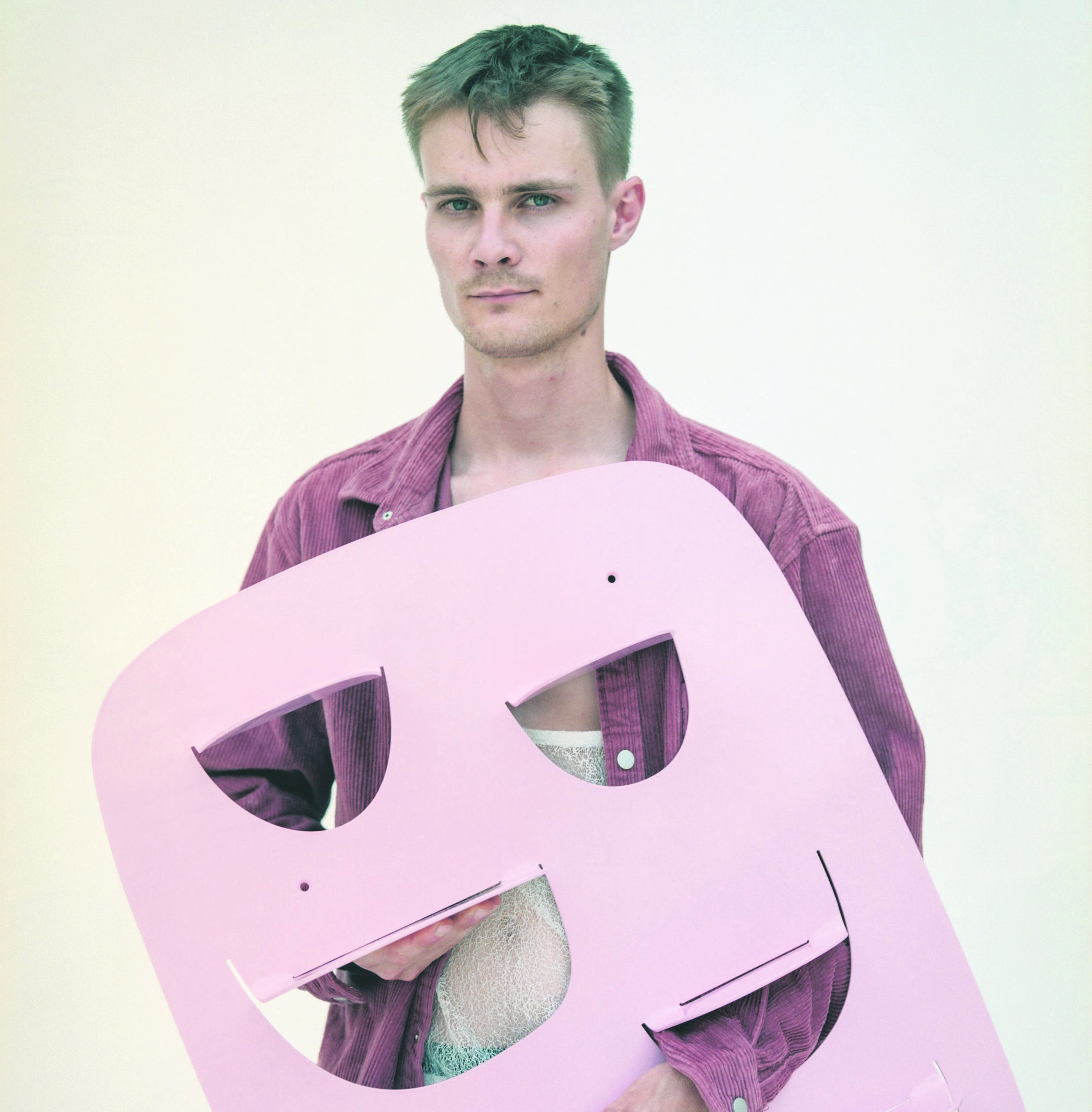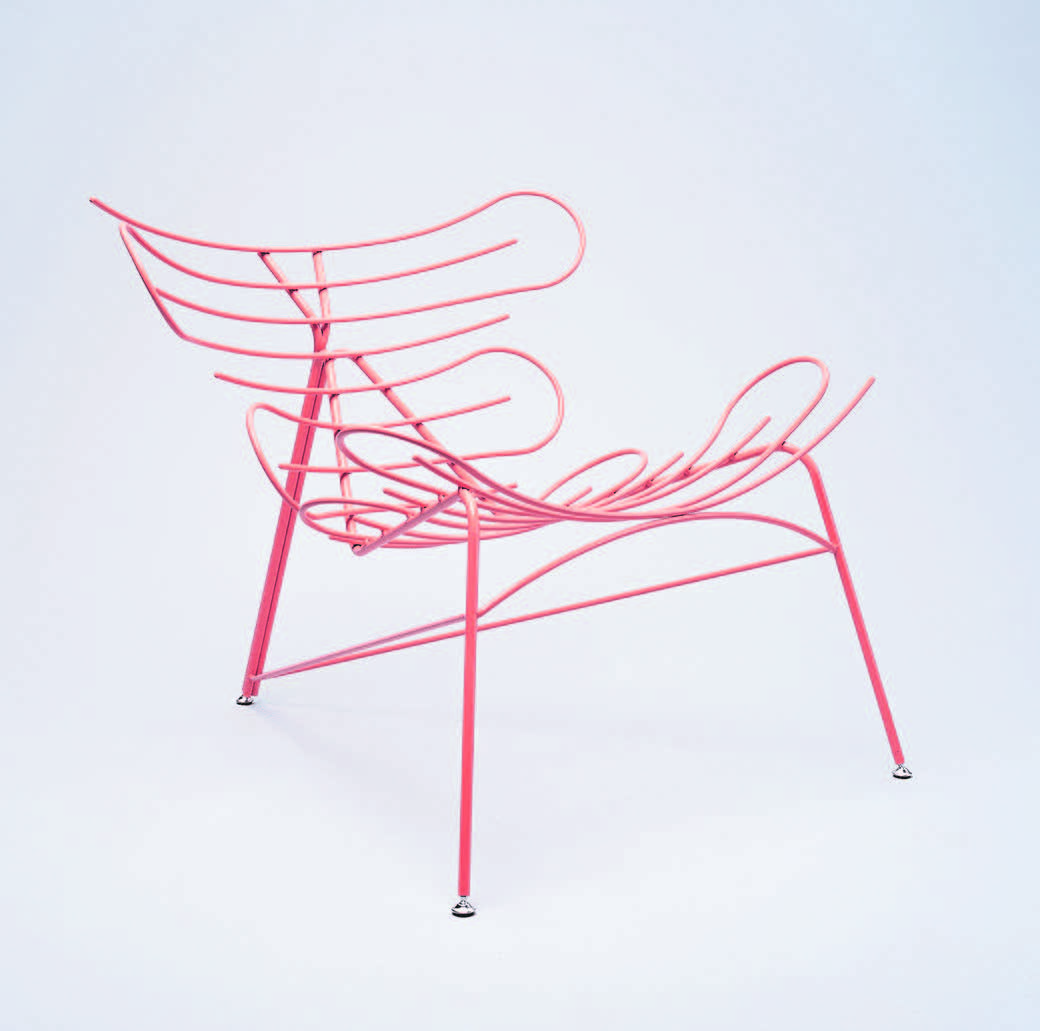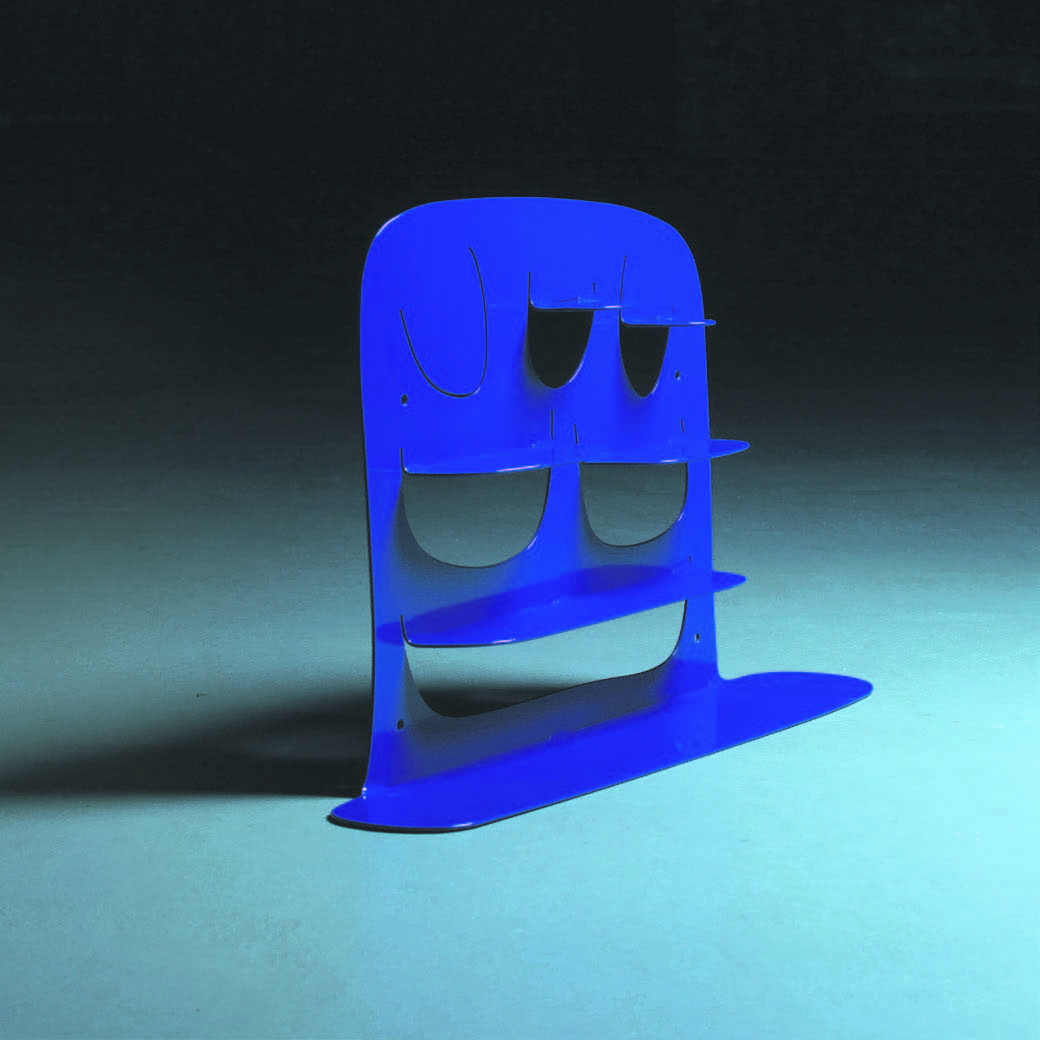Interview / ŠIMON GALANSKÝ
(Slovenčina) Rozhovor s minuloročným víťazom BADW Awards Šimonom Galanským, ktorého autorskú kolekciu nábytku DENNODENNE tento rok nájdete aj v kurátorskom výbere festivalu BADW v decembro v Galérii mesta Bratislavy.

Fohy shelf, photo: Ľuboš Kotlár.
ĽH: Hi Simon! How was your year? What changed?
ŠG: A lot has changed – and a lot will change. I’m at the stage where I’m finding a place where I belong. Just a year ago I finished my studies at the Academy of Fine Arts, which ended a phase of my life. Now I’m trying to keep the essence of where I’ve been and translate it into my professional life – that is, not just living design, but making a living from design.
Which of your pieces do you have the deepest connection to and why?
I think it’s the Sinuo chair, which was created as a bachelor’s thesis. It’s going to be the fact that a lot has happened around it. It started in a short workshop led by a great French designer, Eric Jourdan from Saint-Étienne. The workshop may have only lasted a few days, but I feel like we developed a specific relationship in that short time.
Later on, during the realisation, I had quite a challenging time. Making the chair was a bit of a sculpture – since the chair is bent in two directions, a regular bending machine can’t bend such challenging shapes. Everything was bent with a flame into a hoof. In the end, it was done thanks to the amazing craftsmen I somehow stumbled upon by chance.
The result was a solitary, handmade piece of furniture. Later, the chair won the Professor Halabalu Award and was in several exhibitions at home and abroad. The jury was also impressed by the fact that it was made of only one material. I also had a few interested parties from abroad and the chair was featured in an article on designboom.com, which was probably the biggest surprise for me.
It was actually such a long-term project for me, where not only the chair was born, but also a lot of new relationships and also personal changes.
What do you enjoy most about your work? And what do you enjoy at all?
I divide my work into design as a service and design as creation. If I stop enjoying a commercial project, I always make up for it in my work. Of course, what I enjoy most is the variety of projects. So far I’ve been lucky and perhaps every project has been a little different. Whether I’m designing a blender or furniture for galleries, exhibition design, a book award or making music – the form doesn’t matter. I enjoy the movement and change.
You write about the DENNODENNE collection: “I believe that we shape our identity by the things we surround ourselves with.” What do you like to surround yourself with?
That’s a difficult question for me. Mostly just the things I use. And then even things that have some deeper meaning for me. Things that have something to do with the past.
How were the individual pieces of furniture in the collection created? What does your creative process look like?
Everything starts with an idea, of course. It can be an idea or a fascination with a shape, a detail, or even a mistake – something I misunderstand/see, and then I appropriate the mistake and find out that I actually invented it, but I didn’t even know about it, didn’t think about it. Maybe I’m trying to engage the subconscious as well.
So sometimes I actually try not to make it up, at least in the early stages. Not to identify a particular function or focus. If I can’t imagine something, I put it on paper by drawing it. It’s a process, and even that will often lead me somewhere completely different. I try to engage the imagination. Some products even come to me.
Some elements remind me of a tongue or an open mouth. Do you perceive this symbolism? Were you inspired by anything when choosing a particular morphology?
I’m glad you mention that. It certainly can be. If you see it there, that’s how it will be. There’s a lot of hints, abstraction, but also organics in this collection – so anyone can see what they want to see in it. For example, the initial idea that gave rise to the Fohy series of shelves came from the idea of a mirror looking back at me and sticking its tongue out.
How do you perceive the role of design today?
We probably don’t tell the dentist how to drill our tooth. I see it similarly with design. You can try, but the result probably won’t be the best. The role of the designer is to create value. It’s a person who has a certain level of sensitivity, thinks things through a little bit, and sees the context but also the whole. I think it is very important to entrust design tasks to professionals. Because our environment shapes us and influences us, shapes our feelings and moods.
This year, you designed a Christmas ball for BADW. How did you approach this assignment?
When I looked at most of the Christmas balls, I saw pretty much the same things over and over again – the same themes and designs, glitter and snowflakes. I wanted something completely different, something more current. I confess that the first drawing was a Javelin bazooka (anti-tank handgun, editor’s note), but of course I left that out because it’s too primitive and rather un-Christmassy – but very topical nonetheless!
But speaking of which, I’m terribly uncomfortable with classic themes that have long since worn out their welcome – like, for example, snowflakes – and add , “topicality” to the mix, and I came up with a melting snowman. This is a very topical subject. I’ve worked this motif in an abstract, simplified form that is also animated.
This year’s theme is fragility. How do you reflect it? What is fragile for you?
Freedom is fragile. I don’t want to limit myself in my authorial pieces. I want to do what I want.
What drives you?
When people are interested in my stuff. I can’t do it (just) for myself.

Sinuo Chair.

miun.sk/
@smiuno